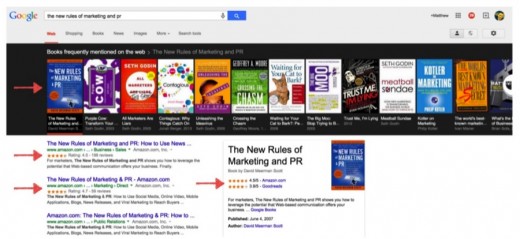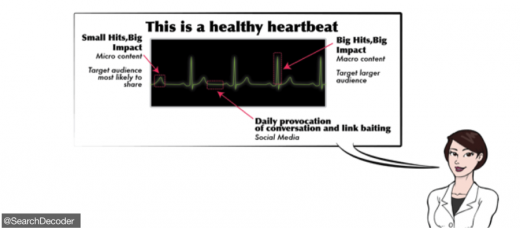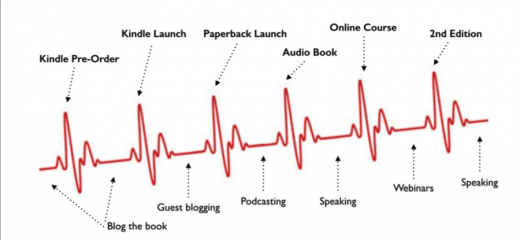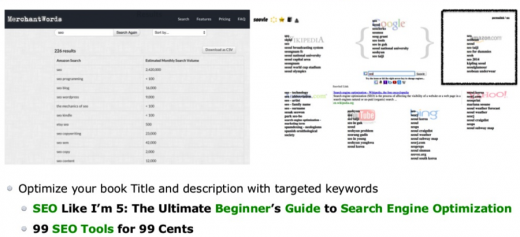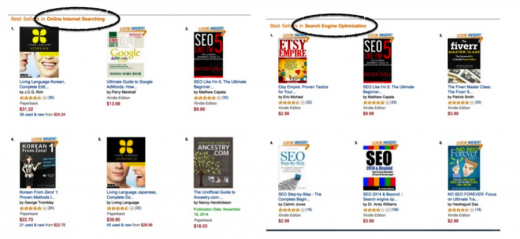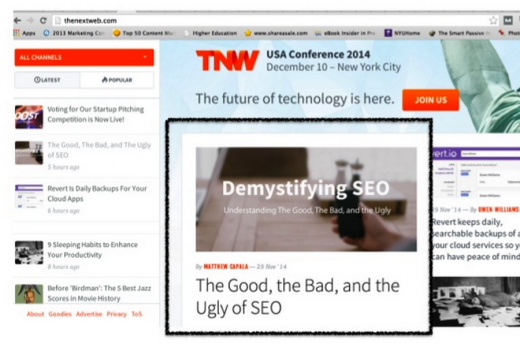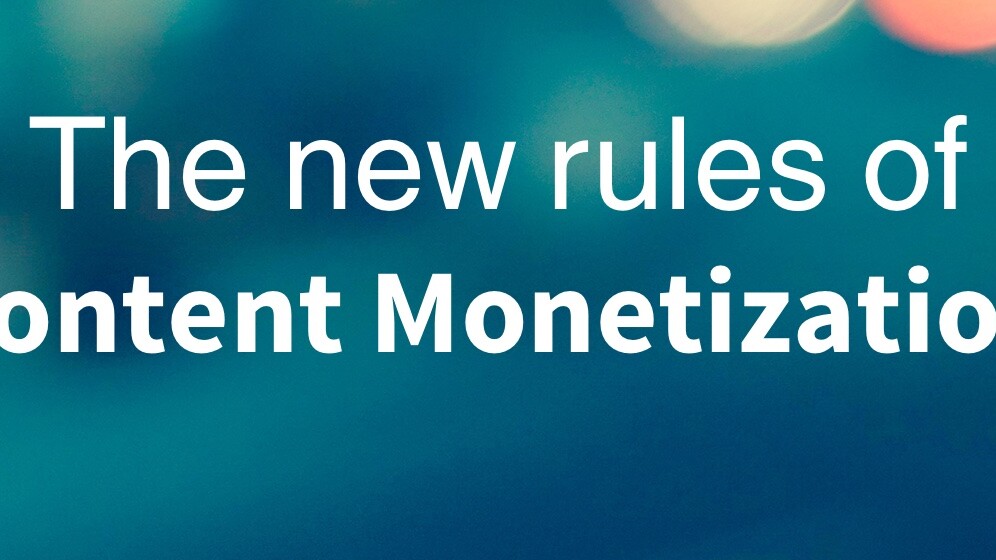
Matthew Capala is an Internet entrepreneur, SEO strategist, speaker, and author. He is the founder of Alphametic, an organic growth accelerator, and SearchDecoder. Mathew is an Adj. Professor at NYU, and is the author of Amazon-bestselling book, “SEO Like I’m 5.”
Content monetization in 2015 involves learning new ways to distribute and market content so that you can reach incremental buyers and leads on platforms that offer a large number of engaged users who are there for one reason: to buy premium digital content.
The days when keyword-optimized landing pages with downloadable PDFs, powered by PayPal and video testimonials performed best are long over.
Established brands or long-standing websites with decent traffic can still convert hard-won site visitors into paying customers using the tactics and technologies of the past. You can do much better by exploiting some of the overlooked content monetization engines out there that bring a lot of value to your audience development efforts. Some of the benefits include:
- built-in user base
- trusted shopping card
- high placements in Google
- network effect
- algorithm that rewards performance
- ease of use and ability to edit
- no cost
The New Rules of Content Monetization
Why do you need to use content monetization engines to build and distribute your digital content products? Because both Google and consumers have evolved.
Marketing is not democratized. Distribution is accessible. The gatekeeper is out, opportunities for all are in. Are you tapping into Amazon, the next gold rush on the Web? Are you building courses on Udemy, the largest online course platform on the Web?
These high-growth platforms, such as Amazon Kindle, Audible or Udemy, are also ranked well in Google and have their own distribution channels.
The Network Effect
Above all, their algorithms are built in a way that rewards network effect — every additional user brings a lot of value to your business because your authority rank on these platforms increases.
For example, the Amazon algorithm gives your content more “love” as more users sign up for it. Through Amazon KDP Select you can offer your Kindle book for free for a limited time. Every quality Amazon download brings value to your book, boosting your Author Rank enabling you to be more visible in Amazon search, relevant categories, and on product pages (users who bought this book also bought your book!).
It’s a win-win. If you get enough users to download your book and drop reviews, Amazon will do the job for you. You can’t match that with a downloadable PDF on your site.
If you’re going to offer something valuable you may as well get paid for it, right? Learning how to effectively monetize your content frees you to create a higher volume of inspired, helpful value for your niche.
Look no further than information products, or info products, as a way of packaging your knowledge into a neat, tidy prospering bundle.
Start with 10 Ideas
Content monetization strategy built for content monetization engines involves acting like a healthy heartbeat. You need to be constantly updating your content, re-launching, re-posting across various platforms, and building new products and formats that will compound your audience and revenue.
Calaudia Azula Altucher is one of the many examples of creative content marketers who has taken a self-publishing approach to share her message. After co-authoring WSJ best-seller, The Power of No, she used Kindle and CreateSpace publishing platforms to launch her next book, Becoming Idea Machine: Because Ideas are the Currency of the 21st Century.
In her book, Claudia inspires us to come up with ten ideas a day as a way to reach success in business. Her mental model can be well applied to the core principles of content monetization marketing: you need a steady flow of good ideas.
According to Claudia, our ability to come up with fresh ideas is like an idea muscle. It atrophies if it’s not used and exercised. If you exercise it daily by pushing your idea muscle to the limits (three ideas are easy, 10 ideas are hard!), your idea muscle will grow in performance and speed.
The Power of Compounding
Keep your content creation momentum rolling. Turn your content product into a brand. James Altucher has done just that with his “Choose Yourself” self-published book series.
“The best way to promote your first book is to write a second one.” ~ James Altucher
The great secret is no secret really; you’ll amplify opportunities by offering free, valued-packed forms of content like eBooks, online courses, slides and blog posts because savvy web visitors demand value. Create value and become valuable.
Although distribution platforms may change, the principles remain the same. Creating helpful, problem solving content for a targeted audience and distribute through multiple channels.
Stick to the basics at the outset, and then learn to scale across various platforms and channels. The challenge is to create a process that allows you to come up with amazing ideas that are repeatable and scalable. Small things will compound.
9 Content Monetization Tips
Amazon is the Doorway
Amazon’s platforms are the ultimate doorway to monetizing your content. Amazon offer a full suite of self-publishing tools for marketing and distribution. Amazon is the 5th biggest website on the web in the US in terms of traffic and it appears highly in Google. The one stop shopping digital storefront is a search engine which sees a tremendous amount of daily volume.
Amazon users know exactly what they want. If your product is a match – and shows up on targeted keywords – expect to see your product downloads and revenue steadily rise.
Smart Keyword Targeting
Tag your book properly with the right keywords on Amazon to create a deluge of interested traffic. I used MerchantWords tool to come up with a creative keyword strategies to optimize my book, SEO Like I’m 5, on Amazon. This tool mines real Amazon search data. You can also use Soovle, which is free. Do your homework to find appropriate keywords.
Categories and Taxonomy
Categorize and classify your info products to yield the best results. Branching into similar niches leverages your presence swiftly. When I launched my first book on Amazon, my goal was to establish best seller status in both the ‘online internet searching’ and ‘search engine optimization’ niches. I did not target the most competitive categories, like ‘marketing.’ Rather, this cross niche domination expands your presence and fortifies your brand online. Dominate a growing niche and win big.
Blog the Book
In a world where nearly 80 percent of consumers search for a product or service before buying it, invisibility is a fate much worse than failure. You must be seen to be known, and you must be known to generate product sales.
Book is usually the foundation of building successful content monetization strategy. It’s the low-price item in your content marketing arsenal that allows you to get your message out to as many people as possible. Then, you can move your audience to higher price point items, such as online course, subscription or membership.
But the book is your best bet to convert a blog reader into a customer. I published “99 SEO Tools for 99 Cents” resource on Amazon Kindle to offer a very small price-point product packaged with tons of value for the readers. In the spirit of compounding, this strategy paid off in channeling more users to my books.
Entice future customers by blogging early chapters of your book. Think of these blog posts as little breadcrumbs that you’re trailing out to draw in eager readers. For example, I have published some of the chapters of my book after launch on The Next Web (The Good, the Bad, and the Ugly of SEO), and multiple other media outlets.
Guest blogging is a powerful way to leverage your presence at the time of a product launch. Be seen by an increasing number of interested users, and rent this high-stake real estate by offering valuable, high-quality content. If the readers like your content, you will receive a nod of approval through increased subscribers and eventually customers. Test your early book chapters through blogging as well to test your concepts before you start selling your ideas.
Launch Your Kindle eBook
Upload your eBook to Kindle Direct Publishing (KDP) to kick off your content monetization efforts. You can generate revenue of 35 percent to 70 percent per sale depending on the pricing model you choose and the content you provide. The maximum amount you can charge is $10 USD. Consider KDP Select if you’d like to make a 90-day commitment to exclusivity. KDP Select eBooks are offered free for five days to generate a world’s worth of buzz on your new release.
Launch Your Paperback Book through CreateSpace
After releasing your Kindle, step it up and appeal to a wider audience by releasing your paperback book on CreateSpace. Pricing depends on factors such as size, color, cover and depth of the book. Order copies in volume to receive a bigger discount and to generate a buzz by giving out these books for free, or sell them using Square. Then, you can organize workshops and book signing events.
Generate buzz by promoting your paperback on GoodReads. Community members can boost your book’s visibility by sharing their thoughts on your paperback. Tap into word of mouth marketing and boost book sales.
If you are excited to go the “Do It Yourself” design route consider using Canva. This free software helps you to design free, rich covers and graphics for your products. Presentation counts heavily in the online game.
Bootstrapping entrepreneurs, such as myself, can use Fiverr to crowdsource book images for $5. Note; be super specific in explaining what you want. Any lack of clarity can be confusing to designers and will likely produce a less than desired image. However, adding eye-popping, colorful images to your book can create a magnetic pull in a spirit of the core principles of infotainement.
Launch Your Audio Book
Use Audio Creation Exchange to pick a skilled narrator to present your book audibly. Adjust your content accordingly to vibe with listening. This program integrates with Amazon to offer you access to a massive, targeted audience.
Choose Audible for your audio book marketplace. Leverage your presence through the networking effect on this site. Users can pick from a wide range of audio books and tap into a 30-day free trial. You can also earn royalties through the integration of Audible with Amazon.
Launch an Online Course
Launch an online course through the platform known as Udemy. Features of this platform include flexible pricing, unlimited coupons to boost sales, a hearty 97 percent revenue model if you sell your own course, and a 50 percent model if Udemy sells the course as well as a 25 percent revenue share if an Udemy affiliate sells the product. Building an online course establishes your authority and opens another monetization stream for your online brand. I found it useful to market my Udemy course with a enticing and memorable domain reditrect, IWillTeachYouSEO.com.
Keep video lectures under 20 minutes, and offer free samples. Make sure to add promotional videos with testimonials to gain the trust of students. Use coupons to draw in bargain shoppers and offer your course gratis for bloggers to review. Think long term; a slew of positive testimonials offered by authority bloggers in tour niche will boost your revenue in the long run, and they will enjoy free premium content.
Your “do it yourself” video and audio production toolbox should include Camtasia and Audacity to create high quality videos, produce screencasts and remaster audio. Augment your online course with these tools to stand out.
Use Subscription-Based Platforms
Spread your online course word with SkillShare and SkillFeed. These platforms are based on a model similar to Netflix; gain access to online courses for a monthly or yearly membership fee. You can repost your Udemy course here only if this doesn’t reduce the course’s value. Otherwise you’d be better off repackaging into many small online courses for sale.
Content drives business, so package your knowledge into info products to benefit your audience. Establish a steady revenue stream through smart monetization strategies. Happy creating!
Read Next: Skimlinks unveils new insights feature to help publishers optimize their affiliate revenue
Get the TNW newsletter
Get the most important tech news in your inbox each week.

